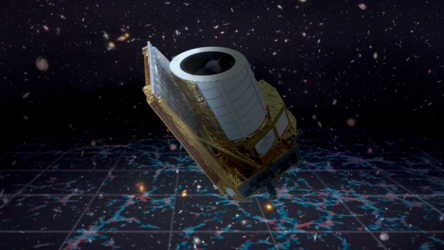How ESA helps connect industry and spark 5G innovation
Connecting people and machines to everything, everywhere and at all times through 5G networks promises to transform society. People will be able to access information and services developed to meet their immediate needs but, for this to happen seamlessly, satellite networks are needed alongside terrestrial ones.
The European Space Agency is working with companies keen to develop and use space-enabled seamless 5G connectivity to develop ubiquitous services. At the UK Space Conference, held from 24 to 26 September in Newport, ESA is showcasing its work with several British-based companies, supported by the UK Space Agency.
The companies are working on applications that range from autonomous ships to connected cars and drone delivery, from cargo logistics to emergency services, from media and broadcast to financial services.
Spire is a satellite-powered data company that provides predictive analysis for global maritime, aviation and weather forecasting. It uses automatic identification systems aboard ships to track their whereabouts on the oceans.
Spire’s network of 80 nanosatellites picks up the identity, position, course and speed of each vessel. Thanks to intelligent machine-learning algorithms, it can predict vessel locations and the ship’s estimated time of arrival at port, enabling port authorities to manage busy docks and market traders to price the goods carried aboard.
Peter Platzer, chief executive of Spire, said: “ESA recognised the value of smaller, more nimble satellites and was looking for a provider that could bring satellites more rapidly and cheaper to orbit. That really was the start of our collaboration. ESA was instrumental in the fact that Spire’s largest office today is in the UK and most of its workforce is in Europe.”
Integrating the ubiquity and unprecedented performance of satellites with terrestrial 5G networks is fundamental to the future success of Darwin, a project to develop connected cars in a partnership between ESA, Telefonica 02, a satellite operator, the universities of Oxford and Glasgow and several UK-based start-up companies.
Connected cars need to switch seamlessly between terrestrial and satellite networks, so that people and goods can move across the country without any glitches.
Darwin relies on a terminal that will allow seamless switching between the networks.
Daniela Petrovic of Telefonica O2, who founded Darwin, said: “There is a really nice ecosystem of players delivering innovation. ESA provided the opportunities to start discussions with satellite operators and helped us create this partnership.
“There is a good body of knowledge within ESA on innovation and science hubs and this gave us the opportunity to see what other start-ups are doing. Through ESA, we are getting exposure to 22 member state countries which can see the opportunity and maybe get involved.”
Magali Vaissiere, Director of Telecommunications and Integrated Applications at ESA, said: “We are very excited to see the response of industry to our Space for 5G initiative, which aims to bring together the cellular and satellite telecommunications world and provide the connectivity fabric to enable the digital transformation of industry and society.
“The showcase of flagship 5G projects today confirms the strategic importance of our Space for 5G initiative, which will be a significant strategic part of the upcoming ESA Conference of Ministers to be held in November.”
Other companies that formed part of the showcase include: Cranfield University, which as part of its Digital Aviation Research and Technology Centre is set to spearhead the UK’s research into digital aviation technology; HiSky, a satellite virtual network operator that offers global low-cost voice, data and internet of things communications using existing telecommunications satellites; Inmarsat, a global satellite operator that is showcasing a range of new maritime services enabled by the seamless integration of 5G cellular and satellite connectivity; Open Cosmos, a small satellite manufacturer based at Harwell in Oxfordshire, which is investigating how to deliver 5G by satellite; and Sky and Space Global based in London that plans a constellation of 200 nanosatellites in equatorial low Earth orbit for narrowband communications.















 Germany
Germany
 Austria
Austria
 Belgium
Belgium
 Denmark
Denmark
 Spain
Spain
 Estonia
Estonia
 Finland
Finland
 France
France
 Greece
Greece
 Hungary
Hungary
 Ireland
Ireland
 Italy
Italy
 Luxembourg
Luxembourg
 Norway
Norway
 The Netherlands
The Netherlands
 Poland
Poland
 Portugal
Portugal
 Czechia
Czechia
 Romania
Romania
 United Kingdom
United Kingdom
 Slovenia
Slovenia
 Sweden
Sweden
 Switzerland
Switzerland





























